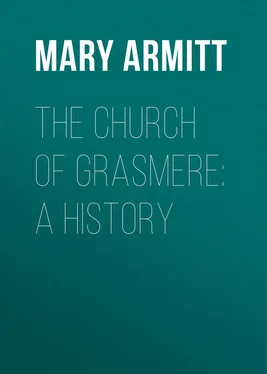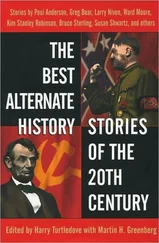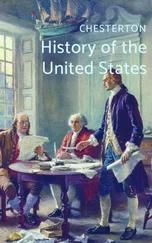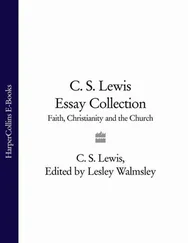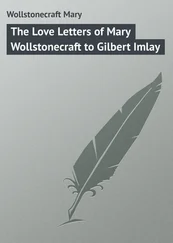Mary Armitt - The Church of Grasmere - A History
Здесь есть возможность читать онлайн «Mary Armitt - The Church of Grasmere - A History» — ознакомительный отрывок электронной книги совершенно бесплатно, а после прочтения отрывка купить полную версию. В некоторых случаях можно слушать аудио, скачать через торрент в формате fb2 и присутствует краткое содержание. ISBN: , Жанр: foreign_antique, foreign_prose, на английском языке. Описание произведения, (предисловие) а так же отзывы посетителей доступны на портале библиотеки ЛибКат.
- Название:The Church of Grasmere: A History
- Автор:
- Жанр:
- Год:неизвестен
- ISBN:http://www.gutenberg.org/ebooks/43002
- Рейтинг книги:4 / 5. Голосов: 1
-
Избранное:Добавить в избранное
- Отзывы:
-
Ваша оценка:
- 80
- 1
- 2
- 3
- 4
- 5
The Church of Grasmere: A History: краткое содержание, описание и аннотация
Предлагаем к чтению аннотацию, описание, краткое содержание или предисловие (зависит от того, что написал сам автор книги «The Church of Grasmere: A History»). Если вы не нашли необходимую информацию о книге — напишите в комментариях, мы постараемся отыскать её.
The Church of Grasmere: A History — читать онлайн ознакомительный отрывок
Ниже представлен текст книги, разбитый по страницам. Система сохранения места последней прочитанной страницы, позволяет с удобством читать онлайн бесплатно книгу «The Church of Grasmere: A History», без необходимости каждый раз заново искать на чём Вы остановились. Поставьте закладку, и сможете в любой момент перейти на страницу, на которой закончили чтение.
Интервал:
Закладка:
This change was not put into effect, however, without fierce opposition in the district. In 1309 an appeal went up to the king from the Abbot of St. Mary, who styled himself "parson of the church of Kirkeby in Kendale," wherein he stated that when his servants had gone to carry in the tithe corn and hay, they had been assaulted by Walter de Strykeland and others; and moreover that Roger, the vicar and the other chaplains and clerks appointed to celebrate divine service in that church, hindered them in the discharge of the same, trampled down and consumed his corn and hay, and took away the horses from his waggons and impounded them. Whereupon three justices were appointed to adjudicate upon the case. 82 82 Calendar Patent Rolls.
From this it would be seen that the local clergy were as bitterly opposed to the monastic rule as the gentry and the people. Sir Walter de Strickland with armed servants at his command headed the opposition. His lands at Sizergh lay to the south of the town of Kendal and he refused to the men of the monastery right of way across them for the collection of the tithes of corn, which was always made while the stooks stood upright in the field. After much wrangling, for no abbot was ever known to withdraw a claim, articles of agreement were made out between them, which reiterated the statement that the church of Kirkby Kendal was "canonically possessed in proper use" by the monastery. 83 83 Sizergh Castle MSS.
However, the convent found it easier to let the tithes to the opponent, rather than to wrestle with an obstructionist policy; and in 1334 Sir Walter is found agreeing to furnish to the monastic granary now established at Kirkby Kendal three good measures of oatmeal for the tithe of the sheaves of Sigredhergh, sold to him by the abbot and convent. 84 84 MS. Dodsworth 28, fol. 78.
But the people were not appeased, and when in 1344 the archbishop made a visitation, opportunity was taken to lay before him, in the name of "the common right," complaints against the monopoly of funds by the convent, as the following document shows: —
In the name of God, Amen, Since we, William, by divine permission Archbishop of York, … in our progress of visitation which we have lately performed in and of our diocese … have found that the religious men the Abbot and Convent of the monastery of St. Mary, against the common right detain the parish churches and chapels, portions, pensions, and parochial tithes underwritten, namely, … the annual pensions in the parts of Richmond: of the church of Richmond 100s. and 20 lbs of wax, … of the vicarage of Kirkby Kendall £4, of the churches of Gresmere and Winandermers 5 marks… We have commanded the said abbot and convent … to show their rights and titles before us and have caused them to be called, … and we … having considered the rights and good faith of the said religious men … release the said abbot and convent … as canonical possessors of the said churches, chapels, portions, pensions (&c)… Dated at Cawood, on the 20th day of the month of August in the year of our Lord MCCCXLIIIJ, and in the third year of our pontificate. 85 85 Calendar of Papal Registers , vol. v., p. 1-4.
The appeal had been made in vain. Yet opposition could not have ceased, as the case was finally carried to Rome. In 1396 a confirmation of the abbey's possessions (including the chapels of Gresmere and Wynandremere, worth 5 marks each) was made by the Pope, on petition by the abbey, according to letters patent of Thomas Arundel, late archbishop of York, dated November, 1392.
THE CLERGY
Though not successful, Sir Walter de Strickland's opposition had done some good, but for exactly 200 years longer did the monastery by the walls of the city of York hold sway over the church of Grasmere. In what degree its influence was felt in the mountain parish cannot be told, or what it gave in return for the pension it abstracted. It may have assisted in the rebuilding of the edifice, lending aid by monastic skill in architecture. Probably it supervised the worship in the church, and improved the ritual, passing on to the village priest the tradition of its own richly furnished sanctuary. Signs were not wanting at the Reformation that the district had been ecclesiastically well served.
It has been seen that the parson of the parish was a pluralist and a non-resident as early as 1254; and so were those of his successors of whom we have evidence. The glimpses obtained through scant record disclose the tithe-taking rector of the valley as a figure distinguished by education, if not by family, and known to the lofty in station. He is termed "Master," and bears the suffix "clerk"; while "Sir" is reserved for the curate, his deputy, who has not graduated at either university. 86 86 Dr. Cox, Parish Registers of England , p. 251.
He was skilled in law more than in theology. He may have served an apprenticeship in the great office of the Chancery; sometimes men of his position are termed "king's clerk." 87 87 In 1383 Richard de Clifford, "king's clerk" was presented to the church of Warton in Kendale, Calendar Patent Rolls .
He was not an idle man, and was often employed in secular business by the lord of the Fee. It may have been in the collection of the lady's dues – for the heiress Christiana de Lindesay, had married Ingelram de Gynes, of Coucy in France, in 1283 – that the parson of Grasmere suffered an assault (1290) at Leghton Gynes (later Leighton Conyers). It is certain that when Robert de Gynes, one of the sons of Christiana, and possessed of some of her lands about Casterton and Levens, went "beyond the seas" in 1334, he empowered Oliver de Welle, parson of Grasmere, to act with Thomas de Bethum as his attorney. Oliver de Welle had a footing in our valleys besides his parsonage, for he is stated to have held, under the lord William de Coucy, deceased, "a certain place called Little Langedon in Stirkland Ketle," which was then (1352) in the custody of the executor of his will, John de Crofte. 88 88 MS. Rawlinson, B. 438, f. 2.
Edmund de Ursewyk, "king's clerk," whom the king nominated to Grasmere in 1349 – the young lord William de Coucy being dead – doubtless came of a Furness family, and may have been related to Adam de Ursewyk who held land for his life in the barony, by grant of the elder William, 89 89 Calendar Patent Roll , 20 Edw. III.
as well as the office of chief forester of the park at Troutbeck. 90 90 Calendar Patent Roll , 20 Edw. III.
"Magister George Plompton" was another learned cleric of good family, being the son of Sir William Plumpton of Plumpton, knight. He was a bachelor-at-law, and was ordained sub-deacon in 1417. It was in 1438-9 that he was nominated to the rectory of Grasmere, by the Chapter of St. Mary's, and some years after he acquired that of Bingham in Nottinghamshire. This he resigned (and doubtless Grasmere also) in two or three years' time, owing to age and infirmities. He retired to Bolton Abbey, and in 1459 obtained leave from the Archbishop of York to have service celebrated for himself and his servants within the walls of the monastery – a permit which gives a picture of affluent peace and piety in a few words. 91 91 Canon Raine's Notes to Testamenta Eboracensia , Sur. So., vol. 30, p. 68.
Master Hugh Ashton, parson, acted as Receiver-general for the lands of the Countess of Richmond (the Lindesay Fee) in 1505-6. 92 92 Min. Acc., Hen. VII., 877.
On his resignation in 1511, Henry VIII. exercised his right as inheritor of the Fee, and nominated John Frost to the rectory; the abbot and convent presenting in due form. This happened again in 1525, when William Holgill was appointed. 93 93 "List of Rydall-Writings." D.F.
Интервал:
Закладка:
Похожие книги на «The Church of Grasmere: A History»
Представляем Вашему вниманию похожие книги на «The Church of Grasmere: A History» списком для выбора. Мы отобрали схожую по названию и смыслу литературу в надежде предоставить читателям больше вариантов отыскать новые, интересные, ещё непрочитанные произведения.
Обсуждение, отзывы о книге «The Church of Grasmere: A History» и просто собственные мнения читателей. Оставьте ваши комментарии, напишите, что Вы думаете о произведении, его смысле или главных героях. Укажите что конкретно понравилось, а что нет, и почему Вы так считаете.
